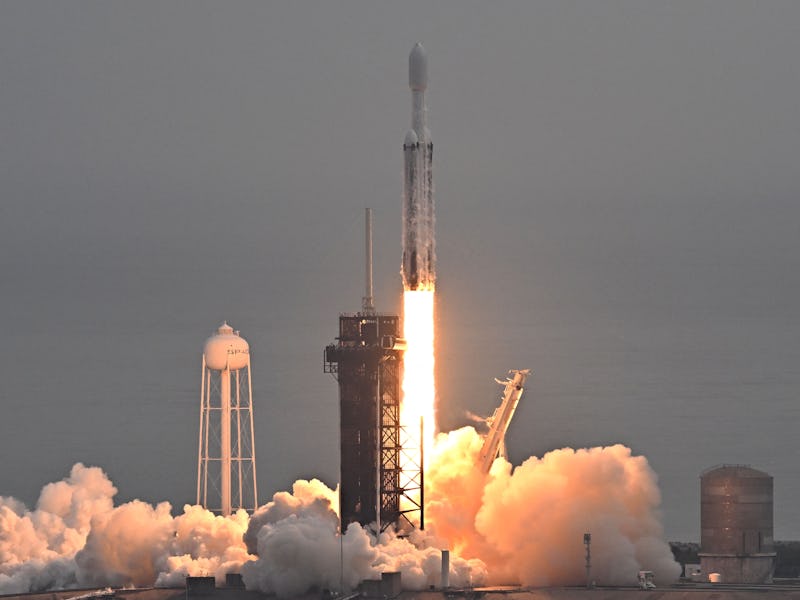NASA’s Psyche Mission Launches to a Metal-Rich Rock in the Asteroid Belt
The mission lifted off via a SpaceX Falcon Heavy rocket.

This morning, a new NASA mission launched toward one of the Solar System’s strangest residents.
Asteroid 16 Psyche is a metal-rich object that may be a remnant of an ancient collision that rendered the heart of a now-dead planet bare. Or, it signals that the Solar System used to be more peculiar than once thought, with Psyche having grown out from a particularly metal-rich pocket. Astronomers don’t know much about this oddity in the asteroid belt between Mars and Jupiter, a distance about three times farther than Earth is from the Sun.
After a delay last week due to weather conditions, NASA’s Psyche spacecraft set sail toward the metal-rich asteroid. The mission launched on Friday at 10:19 a.m. Eastern time from Launch Complex 39A at NASA’s Kennedy Space Center in Cape Canaveral, Florida, atop a SpaceX Falcon Heavy rocket.
Its next major maneuver is to unfurl its cross-shaped solar panels. This takes place an hour after launch, and each wing will take a little more than seven minutes to deploy and latch into place. When they are fully deployed, the spacecraft will reach the size of a singles tennis court.
Where is the spacecraft going?
Then, the spacecraft settles into its six-year journey to asteroid Psyche. The asteroid's distance from the Sun is about 235 million to 309 million miles, But the probe will travel 2.5 billion miles through the Solar System to reach it, cruising in an ever-expanding spiral and hopscotching on Mars’ gravity to speed up and set its trajectory.
When the spacecraft finally enters orbit around asteroid Psyche, the trio of instruments onboard will collect data from various altitudes, ranging from 400 miles and getting up-close to just around 47 miles above the asteroid’s surface, which Nicky Fox, associate administrator for NASA’s science directorate, called “freaking cool!”
An artist’s illustration of NASA’s Psyche spacecraft as it approaches the asteroid Psyche. The mission launched this morning and will arrive at the asteroid in 2029.
Why is NASA Studying Asteroids Like Psyche?
Psyche is one of several active asteroid-centric missions at NASA. The space agency witnessed the descent of samples from asteroid Bennu on September 24, the first time it had attained such a dusty prize.
The OSIRIS-REx spacecraft, which plucked this material, is now sailing towards Apophis, an intriguing asteroid that will fly near Earth in 2029. Another NASA mission called Lucy is flying through the Solar System towards a mysterious population of asteroids near Jupiter. Before it reaches its first of these so-called Trojan asteroids, it will visit asteroid Dinkinesh on November 1, 2023.
Studying these pieces of space rock helps scientists better understand the origins of the universe and what occurred as planets were forming. The asteroid Psyche is even more intriguing. Preliminary research suggests that it could be dense, and be abundant in iron. Scientists will have a better understanding of Psyche and what it could mean once they get a closer look. Unfortunately, they’ll have to wait until 2029.